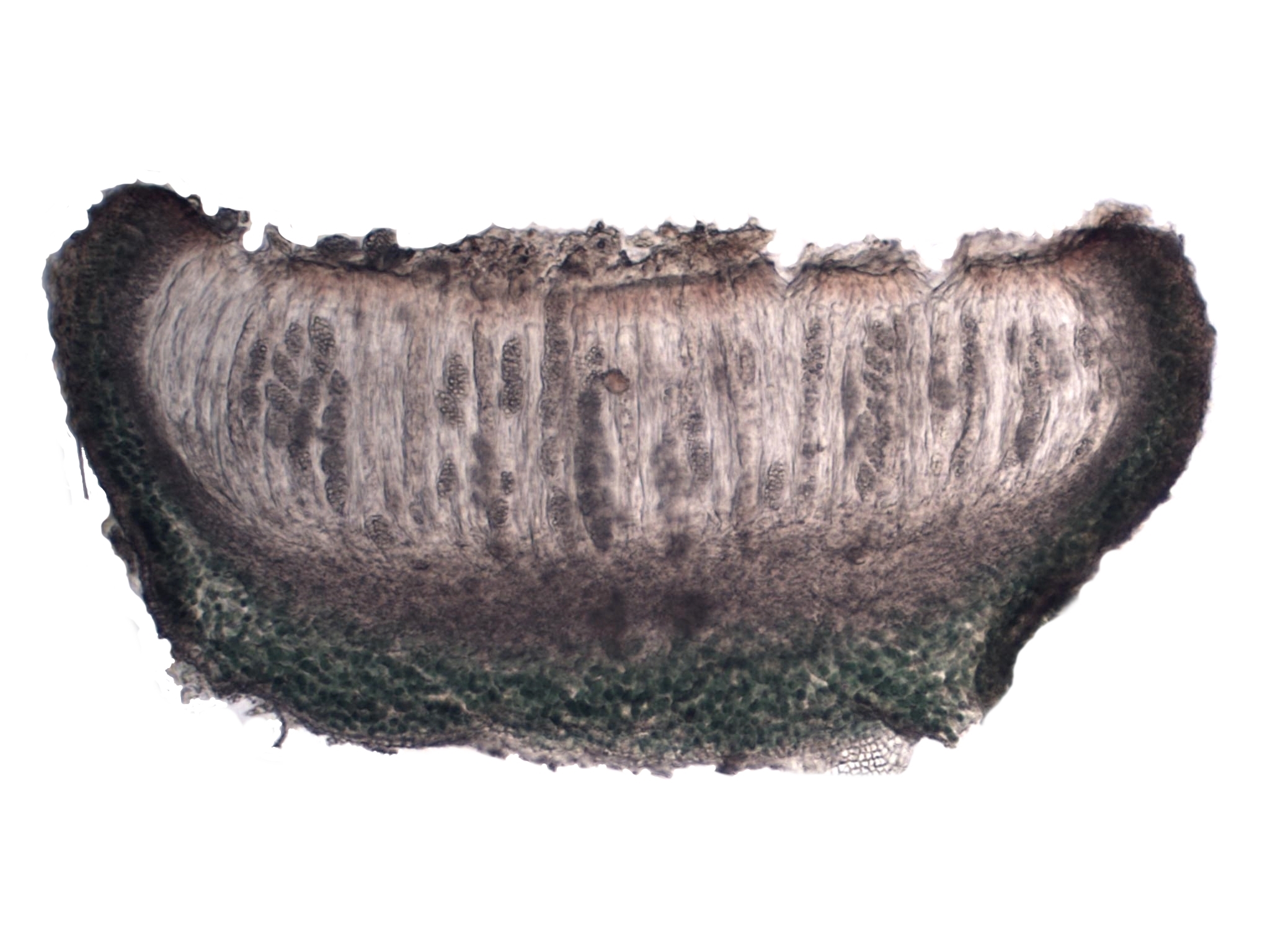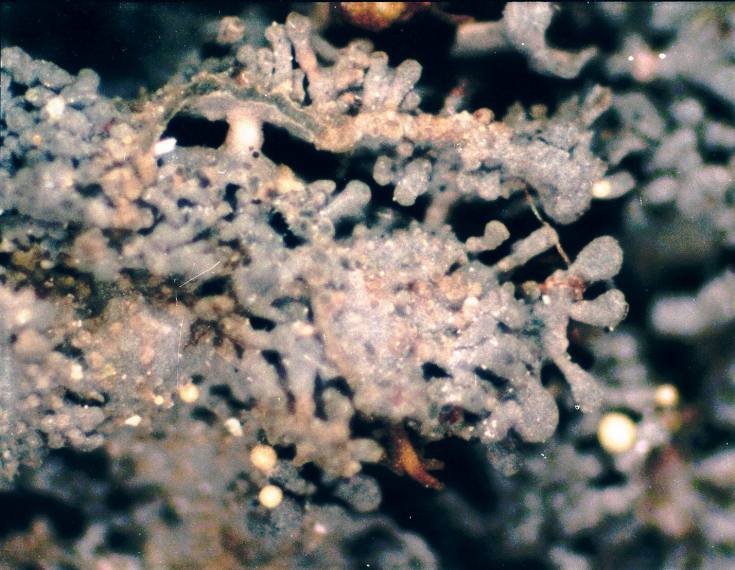|
Scytinium Aquale
''Scytinium'' is a genus of lichen-forming fungi in the family Collemataceae. It has 49 species. These lichens are typically found on basic rocks, soil, and trees, occasionally in association with mosses. Despite the morphological and ecological diversity within ''Scytinium'', its species share similar ascospore features, such as shape and septation, as well as a small to medium-sized thallus with at least a partial . Description ''Scytinium'' encompasses lichen species that exhibit a variety of thallus forms, such as crustose, squamulose, , or . These lichens have a gelatinous texture, and their colour ranges from dark brown and bluish-grey to olive-green. The of ''Scytinium'' can be spreading, elongate, or somewhat cylindrical in shape. The upper and lower , when present, is composed of either cuboid cells or flattened, degraded tissue. The medulla contains loosely interwoven or compact hyphae, along with the photobiont ''Nostoc''–a common genus of cyanobacteria. Both t ... [...More Info...] [...Related Items...] OR: [Wikipedia] [Google] [Baidu] |
Squamulose Lichen
A squamulose lichen is a lichen that is composed of small, often overlapping "scales" called . If they are raised from the substrate and appear leafy, the lichen may appear to be a foliose lichen, but the underside does not have a "skin" (cortex), as foliose lichens do. Squamulose lichens are composed of flattish units that are usually tightly clustered. They are like an intermediate between crustose Crustose is a Habit (biology), habit of some types of algae and lichens in which the organism grows tightly appressed to a substrate, forming a biological layer. ''Crustose'' adheres very closely to the Substrate (biology), substrates at all poin ... and foliose lichens. Examples of squamulose lichens include '' Vahliella leucophaea'', '' Cladonia subcervicornis'' and '' Lichenomphalia hudsoniana''. References Lichenology {{lichen-stub ... [...More Info...] [...Related Items...] OR: [Wikipedia] [Google] [Baidu] |
Ascus
An ascus (; : asci) is the sexual spore-bearing cell produced in ascomycete fungi. Each ascus usually contains eight ascospores (or octad), produced by meiosis followed, in most species, by a mitotic cell division. However, asci in some genera or species can occur in numbers of one (e.g. '' Monosporascus cannonballus''), two, four, or multiples of four. In a few cases, the ascospores can bud off conidia that may fill the asci (e.g. '' Tympanis'') with hundreds of conidia, or the ascospores may fragment, e.g. some '' Cordyceps'', also filling the asci with smaller cells. Ascospores are nonmotile, usually single celled, but not infrequently may be coenocytic (lacking a septum), and in some cases coenocytic in multiple planes. Mitotic divisions within the developing spores populate each resulting cell in septate ascospores with nuclei. The term ocular chamber, or oculus, refers to the epiplasm (the portion of cytoplasm not used in ascospore formation) that is surrounded by the ... [...More Info...] [...Related Items...] OR: [Wikipedia] [Google] [Baidu] |
Iodine
Iodine is a chemical element; it has symbol I and atomic number 53. The heaviest of the stable halogens, it exists at standard conditions as a semi-lustrous, non-metallic solid that melts to form a deep violet liquid at , and boils to a violet gas at . The element was discovered by the French chemist Bernard Courtois in 1811 and was named two years later by Joseph Louis Gay-Lussac, after the Ancient Greek , meaning 'violet'. Iodine occurs in many oxidation states, including iodide (I−), iodate (), and the various periodate anions. As the heaviest essential mineral nutrient, iodine is required for the synthesis of thyroid hormones. Iodine deficiency affects about two billion people and is the leading preventable cause of intellectual disabilities. The dominant producers of iodine today are Chile and Japan. Due to its high atomic number and ease of attachment to organic compounds, it has also found favour as a non-toxic radiocontrast material. Because of the spec ... [...More Info...] [...Related Items...] OR: [Wikipedia] [Google] [Baidu] |
Hymenium
The hymenium is the tissue layer on the hymenophore of a fungal fruiting body where the cells develop into basidia or asci, which produce spores. In some species all of the cells of the hymenium develop into basidia or asci, while in others some cells develop into sterile cells called cystidia ( basidiomycetes) or paraphyses ( ascomycetes). Cystidia are often important for microscopic identification. The subhymenium consists of the supportive hyphae from which the cells of the hymenium grow, beneath which is the hymenophoral trama, the hyphae that make up the mass of the hymenophore. The position of the hymenium is traditionally the first characteristic used in the classification and identification of mushrooms. Below are some examples of the diverse types which exist among the macroscopic Basidiomycota and Ascomycota. * In agarics, the hymenium is on the vertical faces of the gills. * In boletes and polypores, it is in a spongy mass of downward-pointing tubes ... [...More Info...] [...Related Items...] OR: [Wikipedia] [Google] [Baidu] |
Potassium Hydroxide
Potassium hydroxide is an inorganic compound with the formula K OH, and is commonly called caustic potash. Along with sodium hydroxide (NaOH), KOH is a prototypical strong base. It has many industrial and niche applications, most of which utilize its caustic nature and its reactivity toward acids. An estimated 700,000 to 800,000 tonnes were produced in 2005. KOH is noteworthy as the precursor to most soft and liquid soaps, as well as numerous potassium-containing chemicals. It is a white solid that is dangerously corrosive. Properties and structure KOH exhibits high thermal stability. Because of this high stability and relatively low melting point, it is often melt-cast as pellets or rods, forms that have low surface area and convenient handling properties. These pellets become tacky in air because KOH is hygroscopic. Most commercial samples are ca. 90% pure, the remainder being water and carbonates. Its dissolution in water is strongly exothermic. Concentrated aqueous ... [...More Info...] [...Related Items...] OR: [Wikipedia] [Google] [Baidu] |
Apothecia
An ascocarp, or ascoma (: ascomata), is the fruiting body ( sporocarp) of an ascomycete phylum fungus. It consists of very tightly interwoven hyphae and millions of embedded asci, each of which typically contains four to eight ascospores. Ascocarps are most commonly bowl-shaped (apothecia) but may take on a spherical or flask-like form that has a pore opening to release spores (perithecia) or no opening (cleistothecia). Classification The ascocarp is classified according to its placement (in ways not fundamental to the basic taxonomy). It is called ''epigeous'' if it grows above ground, as with the morels, while underground ascocarps, such as truffles, are termed ''hypogeous''. The structure enclosing the hymenium is divided into the types described below (apothecium, cleistothecium, etc.) and this character ''is'' important for the taxonomic classification of the fungus. Apothecia can be relatively large and fleshy, whereas the others are microscopic—about the s ... [...More Info...] [...Related Items...] OR: [Wikipedia] [Google] [Baidu] |
Ascomata
An ascocarp, or ascoma (: ascomata), is the fruiting body (sporocarp (fungi), sporocarp) of an ascomycete phylum fungus. It consists of very tightly interwoven hyphae and millions of embedded ascus, asci, each of which typically contains four to eight ascospores. Ascocarps are most commonly bowl-shaped (apothecia) but may take on a spherical or flask-like form that has a pore opening to release spores (perithecia) or no opening (cleistothecia). Classification The ascocarp is classified according to its placement (in ways not fundamental to the basic Taxonomy (biology), taxonomy). It is called ''epigeous'' if it grows above ground, as with the morels, while underground ascocarps, such as truffles, are termed ''hypogeous''. The structure enclosing the hymenium is divided into the types described below (apothecium, cleistothecium, etc.) and this character ''is'' important for the taxonomic classification of the fungus. Apothecia can be relatively large and fleshy, whereas the ot ... [...More Info...] [...Related Items...] OR: [Wikipedia] [Google] [Baidu] |
Soredia
Soredia are common reproduction, reproductive structures of lichens. Lichens asexual reproduction, reproduce asexually by employing simple fragmentation and production of soredia and isidia. Soredia are powdery propagules composed of fungus, fungal hyphae wrapped around cyanobacteria or green algae. These can be either scattered diffusely across the surface of the lichen's thallus, or produced in localized structures called soralia. Fungal hyphae make up the basic body structure of a lichen. The soredia are released through openings in the upper cortex of the lichen structure. After their release, the soredia disperse to establish the lichen in a new location. References Fungal morphology and anatomy Lichenology {{lichen-stub ... [...More Info...] [...Related Items...] OR: [Wikipedia] [Google] [Baidu] |
Isidia
An isidium (plural: isidia) is a tiny, wart- or finger-like outgrowth on the thallus surface of certain lichen species. It is one of two principal types of vegetative reproduction, vegetative reproductive structures in lichens, the other being soredium, soredia. Each isidium contains both fungus, fungal and algae, algal partners and is wrapped in a thin protective layer (the ), distinguishing it from soredia, which lack this covering. While both function in vegetative reproduction, the heavier, corticate structure of isidia means they tend to establish in microhabitats close to the parent thallus, often favouring stable, humid niches where mechanical protection improves survival. Unlike spores, which are microscopic and easily carried over long distances by wind, isidia are larger, multicellular fragments that rely on external forces such as wind, rain, or animal contact, but typically disperse over much shorter ranges. Isidia are morphology (biology), morphologically diverse, ra ... [...More Info...] [...Related Items...] OR: [Wikipedia] [Google] [Baidu] |
Scytinium Gelatinosum 501549
''Scytinium'' is a genus of lichen-forming fungi in the family Collemataceae. It has 49 species. These lichens are typically found on basic rocks, soil, and trees, occasionally in association with mosses. Despite the morphological and ecological diversity within ''Scytinium'', its species share similar ascospore features, such as shape and septation, as well as a small to medium-sized thallus with at least a partial . Description ''Scytinium'' encompasses lichen species that exhibit a variety of thallus forms, such as crustose, squamulose, , or . These lichens have a gelatinous texture, and their colour ranges from dark brown and bluish-grey to olive-green. The of ''Scytinium'' can be spreading, elongate, or somewhat cylindrical in shape. The upper and lower , when present, is composed of either cuboid cells or flattened, degraded tissue. The medulla contains loosely interwoven or compact hyphae, along with the photobiont ''Nostoc''–a common genus of cyanobacteria. Both t ... [...More Info...] [...Related Items...] OR: [Wikipedia] [Google] [Baidu] |
Cyanobacteria
Cyanobacteria ( ) are a group of autotrophic gram-negative bacteria that can obtain biological energy via oxygenic photosynthesis. The name "cyanobacteria" () refers to their bluish green (cyan) color, which forms the basis of cyanobacteria's informal common name, blue-green algae. Cyanobacteria are probably the most numerous taxon to have ever existed on Earth and the first organisms known to have produced oxygen, having appeared in the middle Archean eon and apparently originated in a freshwater or terrestrial environment. Their photopigments can absorb the red- and blue-spectrum frequencies of sunlight (thus reflecting a greenish color) to split water molecules into hydrogen ions and oxygen. The hydrogen ions are used to react with carbon dioxide to produce complex organic compounds such as carbohydrates (a process known as carbon fixation), and the oxygen is released as a byproduct. By continuously producing and releasing oxygen over billions of years, cyanobacte ... [...More Info...] [...Related Items...] OR: [Wikipedia] [Google] [Baidu] |







